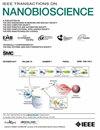Design and Probing of Prism-Based SPR Nano-Biosensor for Human Sperm Detection
IF 4.4
4区 生物学
Q1 BIOCHEMICAL RESEARCH METHODS
引用次数: 0
Abstract
Human sperm functioning is crucial for maintaining natural reproduction, but its sterility is enhanced by variations in environmental conditions. Because of these agitating properties, powerful computer-aided devices are required, but their precision is inadequate, particularly when it comes to samples with low sperm concentrations. Therefore, for the first time, this article introduces the sulfide material-based structure for the detection of human sperm samples using the prism-based surface plasmon resonance sensor (SPR) Nano-biosensor. The proposed structure is designed on the basis of a prism-based Kretschmann configuration and includes silver, silicon, a sulfide layer, black phosphorus, and a sensing medium. This work takes advantage of the excitement of surface plasmons and evanescent waves in the metal dielectric region. For the detection process, seven sperm samples are taken, with their concentration, mobility, and refractive index measured by the refractometer. The proposed structure provides a maximum sensitivity of用于人类精子检测的棱镜式 SPR 纳米生物传感器的设计与探测
人类精子的功能对维持自然繁殖至关重要,但环境条件的变化会增加精子的不育性。由于这些搅拌特性,需要功能强大的计算机辅助设备,但其精度不够,尤其是在检测精子浓度较低的样本时。因此,本文首次介绍了基于硫化物材料的结构,利用棱镜表面等离子体共振传感器(SPR)纳米生物传感器检测人类精子样品。所提出的结构是在基于棱镜的 Kretschmann 构型基础上设计的,包括银、硅、硫化物层、黑磷和传感介质。这项工作利用了表面等离子体和蒸发波在金属介质区域的激励作用。在检测过程中,采集了七个精子样本,并通过折射仪测量了它们的浓度、迁移率和折射率。拟议结构的最大灵敏度为 409.17°/RIU,QF 为 97.45RIU-1,DA 为 1.37。与文献报道的工作相比,结果有了很大改进。
本文章由计算机程序翻译,如有差异,请以英文原文为准。
求助全文
约1分钟内获得全文
求助全文
来源期刊

IEEE Transactions on NanoBioscience
工程技术-纳米科技
CiteScore
7.00
自引率
5.10%
发文量
197
审稿时长
>12 weeks
期刊介绍:
The IEEE Transactions on NanoBioscience reports on original, innovative and interdisciplinary work on all aspects of molecular systems, cellular systems, and tissues (including molecular electronics). Topics covered in the journal focus on a broad spectrum of aspects, both on foundations and on applications. Specifically, methods and techniques, experimental aspects, design and implementation, instrumentation and laboratory equipment, clinical aspects, hardware and software data acquisition and analysis and computer based modelling are covered (based on traditional or high performance computing - parallel computers or computer networks).
 求助内容:
求助内容: 应助结果提醒方式:
应助结果提醒方式:


